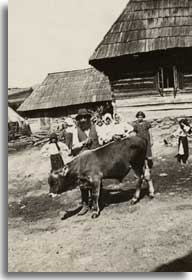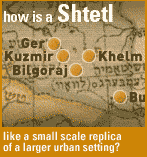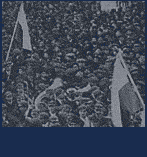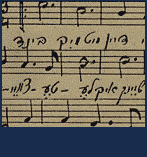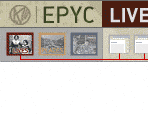

Kroscienko
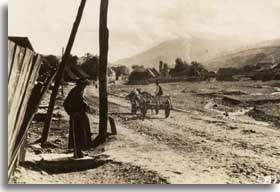

Another former village resident, Rose Rubinstein van Schaick, recalls Kroscienko, her childhood dorf in southern Poland. It was in a fertile and bucolic valley of the Carpathian Mountains. A somewhat larger and more established community than Czernica, Kroscienko had a total of 240 Jews out of a population of 2,000 residents before the Holocaust. Unlike many derfer, this village maintained its own synagogue and rabbi, but in most other respects its Jews lived an insular life without the benefit of a sizeable concentrated Jewish community.
Though less than 25 miles from the nearest shtetl, Nowy Targ, and under 50 miles from Cracow, the village seemed remote and inaccessible from the rest of Poland, as well as from the rest of the world. She remembers only once or twice going to Nowy Targ over a span of 17 years. On one lucky occasion an escort took her by bus and train to Cracow, which felt like an enormous metropolis in contrast to her sleepy village. Other children were very jealous of her trip. With seven siblings living in a poor household, Rose Rubinstein van Schaick's family struggled to survive. One child died very young and her mother blamed herself for not having enough food to feed the family. Her father owned a small material shop, often traveling into Nowy Targ to replenish his supplies. Though most families lived as their family did, the village also boasted several successful Jews, including three lawyers and a doctor.
She attended a Polish public school in Kroscienko until the age of 13, after which she stayed home to help her mother with the many household chores. There was no high school nearby and at that time girls were not sent to religious schools.
The synagogue and rabbi of Kroscienko served the religious needs of the larger area and welcomed visitors who often slept in the building's foyer. The synagogue itself was constructed during the early 20th century to replace a rotting wooden shack. The synagogue building remained open all night for study circles and attracted all types of observant Jews; still the majority of Kroscienko's Jews were Hasidim. Next door was a modest kheyder, and nearby was a house hosting Akiva, a Zionist  youth group, and Agudas Israel
youth group, and Agudas Israel  , which organized discussion groups, a youth club, and seminars. The rabbi of Kroscienko and the leader of Agudas Israel was Yehoshua Boimel, who had studied at the Yeshivat Khakhmei Lublin. He was later killed by the Nazis at the age of 30.
, which organized discussion groups, a youth club, and seminars. The rabbi of Kroscienko and the leader of Agudas Israel was Yehoshua Boimel, who had studied at the Yeshivat Khakhmei Lublin. He was later killed by the Nazis at the age of 30.
One special distinction of the village (and several others nearby) is that it was a resort town for Poles and Jews who could afford it, beginning in the late 19th century. They arrived during the summertime and rented homes or rooms for the season. Rose Rubinstein Van Schaick's family built an extra room in their house for this purpose. Today, the Jewish history of Kroscienko and the Carpathian Mountains is but a distant memory. Once a hardscrabble rural village, Kroscienko is now largely an area offering health spas, resorts, and outdoor recreation.






